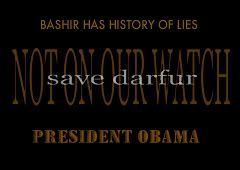WATCHING SUDAN FROM SATELLITES -SHINING A SPOTLIGHT ON POTENTIAL CRIMES AGAINST HUMANITY
.................................
.................................
Watch George Clooney on ABC January 2, 1011 ~ Our job is to stop it before it starts
Satellite Sentinel Project www.satsentinel.com
What is the Satellite Sentinel Project?
The Satellite Sentinel Project combines satellite imagery analysis and field
reports with Google's Map Maker technology to deter the resumption of war
between North and South Sudan. The project provides an early warning system to
deter mass atrocities by focusing world attention and generating rapid responses
on human rights and human security concerns.
The Satellite Sentinel Project marks the first sustained, public effort to
systematically monitor and report on potential hotspots and threats to security
along a border, in near real-time (within 24-36 hours), with the aim of heading
off humanitarian disaster and human rights crimes before they occur.
Project partners:
This project is the result of an unprecedented collaboration between Not On Our
Watch, Google, the Enough Project, the United Nations UNITAR Operational
Satellite Applications Programme (UNOSAT), the Harvard Humanitarian Initiative,
and Trellon, LLC.
Empowering the Sudanese people:
It is important to note that Satellite Sentinel is a project with many
contributors, including the Sudanese people. The organization Ushahidi, which
"builds tools for democratizing information, increasing transparency and
lowering the barriers for individuals to share their stories," runs
SudanVoteMonitor, a Twitter-like mechanism to connect with people on the
ground--the Sudanese--and give them a way to tell the world what is happening.
These reports will be incorporated into the mapping, and will help guide us in
knowing which satellite images need to be retrieved to confirm their reports. By
doing so, the project aims not to impose on the people of Sudan, but rather
empower them in their struggle for peace.
How does it work?
1. Image capturing: Commercial satellites passing over the border of northern
and southern Sudan are able to capture possible threats to civilians, observe
the movement of displaced people, detect bombed and razed villages, or note
other evidence of pending mass violence.
2. Image analysis: UNOSAT leads the collection and analysis of the images and
collaborates with Google and Trellon to design the web platform for the public
to easily access the images and reports. Harvard Humanitarian Initiative
provides system-wide research and leads the collection, human rights analysis,
and corroboration of on-the-ground reports that contextualizes the satellite
imagery.
3. Field reports and policy analysis: The Enough Project contributes field
reports, provides policy analysis
4. Advocacy: Together with Not On Our Watch, the Enough Project puts pressure on
policymakers by urging the public to act through actions provided by the Sudan
Now campaign.
Why was the Satellite Sentinel Project started?
We've learned that criminals thrive in the dark. This project is a way of
shining a light on Sudan, of making sure that those would-be perpetrators of war
cannot operate in the dark, as they have done so many times before. It's much
more difficult to start a war when you know the world is watching--and when you
know that you will be unable to deny your actions later.
Furthermore, world leaders will have no excuse for inaction once they are
presented with empirical evidence of crimes and other scenarios that might
otherwise be denied or ignored.
Labels: 800 GENOCIDE, Chlldren, Darfur, George Clooney, John Prendergast, Sandra Hammel ilovemylife, Satellites, South Sudan



0 Comments:
Post a Comment
Subscribe to Post Comments [Atom]
<< Home